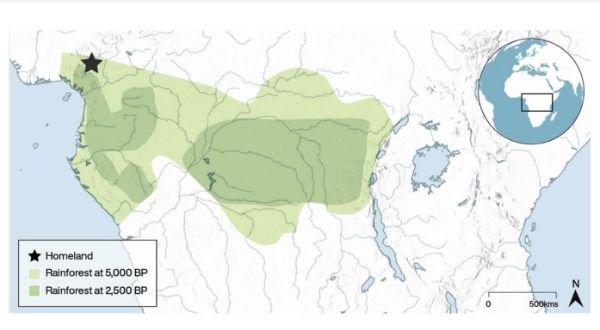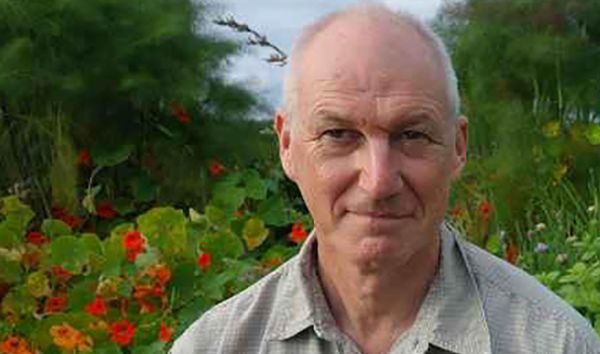Scientists Reconstruct Human Migration That Changed Africa More Than 4,000 Years Ago
Scientists have reconstructed a migration that changed Africa
Bantu peoples conquered dense tropical rainforest 4,400 years ago to spread their languages and culture across the continent, according to scientists from the University of Auckland and Germany’s Max Planck Institute for Evolutionary Anthropology.
The migration transformed sub-Saharan Africa’s languages, economy and culture, with hundreds of millions of people today speaking Bantu languages.
Novel computational methods and linguistic data helped researchers to piece together what happened.
“Cutting-edge computational analysis of languages allowed us to test scenarios for when and how Bantu-speaking people spread out over the continent,” says Dr Simon Greenhill, of the University of Auckland’s School of Biological Sciences.
The ancestors of current Bantu speakers lived 5,000 to 6,000 years ago near the current border of Nigeria and Cameroon in West-Central Africa.
The puzzle: how and when did these peoples expand to ultimately cover about half of the African continent despite the vast obstacle of the Central African rainforest, which stretched from the Atlantic coast to the great lakes in East Africa.
Linguistic data from more than 400 Bantu and closely related languages yielded a language family tree to reconstruct the spread southwards of Bantu speakers.
It had previously been thought that as farmers with cattle and crops such as millet Bantu peoples would have found it hard or impossible to cross the rainforest. That fuelled speculation their route could have been through the Sangha River Interval, a savanna corridor that opened alongside the rainforest around 2,500 years ago.
However, the new study rejects this notion, showing that the migration moved through the rainforest, possibly with people adopting subsistence lifestyles instead of relying on intensive agriculture.

“The potential consequences of our findings extend well beyond the Bantu-affiliated migrations, as they challenge the notion that agricultural expansions are entirely determined by assumed ecological conditions for the cultivation and exploitation of specific crops,” the scientists write in a paper published in the journal PNAS.
The findings fit
with recent anthropological evidence of humans adapting to
tropical forests.
“Of course, ecology matters,
but it isn't destiny," says Professor Russell Gray, who’s
the senior author of the study. He’s based in Germany with
the Max Planck Institute and affiliated with the School of
Psychology at the University of Auckland.

The researchers used a novel method borrowed from genetics called sequence-free sampling to account for possible geographic biases caused by a lack of data for around 200 undocumented Bantu languages.
"It's really exciting to be able to use these methods to provide the most comprehensive analysis of the Bantu languages to date,” says Dr Greenhill. “These methods give us real power to resolve these long-standing debates about major human population expansions.”
Besides the sequence-free sampling approach, an important methodological improvement was the use of a “break-away” geographic model.
“According to this model, at every split in the language tree, one of the populations stays in the same place, while the other migrates,” says Dr Remco Bouckaert, a senior research fellow in the School of Computer Science at the University of Auckland. “This seems more realistic than other diffusion-based methods, where both populations are forced to migrate.”

The lead author of the study was Dr Ezequiel Koile of the Max Planck Institute for Evolutionary Anthropology.


 Bill Bennett: Download Weekly - How would NZ telecoms cope with another cyclone
Bill Bennett: Download Weekly - How would NZ telecoms cope with another cyclone NZ On Air: Firm Audience Favourites Lead NZ On Air Non-Fiction Funding
NZ On Air: Firm Audience Favourites Lead NZ On Air Non-Fiction Funding Insurance and Financial Services Ombudsman: Woman Gets $40k More After Disputing Insurer’s Decision
Insurance and Financial Services Ombudsman: Woman Gets $40k More After Disputing Insurer’s Decision BNZ: A Quarter Of Older NZers Fear Going Online Due To Scam Concerns
BNZ: A Quarter Of Older NZers Fear Going Online Due To Scam Concerns University of Auckland: Scientists Develop Tool To Monitor Coastal Erosion In Fine Detail
University of Auckland: Scientists Develop Tool To Monitor Coastal Erosion In Fine Detail Oji Fibre Solutions: OjiFS Proposes To Discontinue Paper Production At Kinleith Mill
Oji Fibre Solutions: OjiFS Proposes To Discontinue Paper Production At Kinleith Mill



